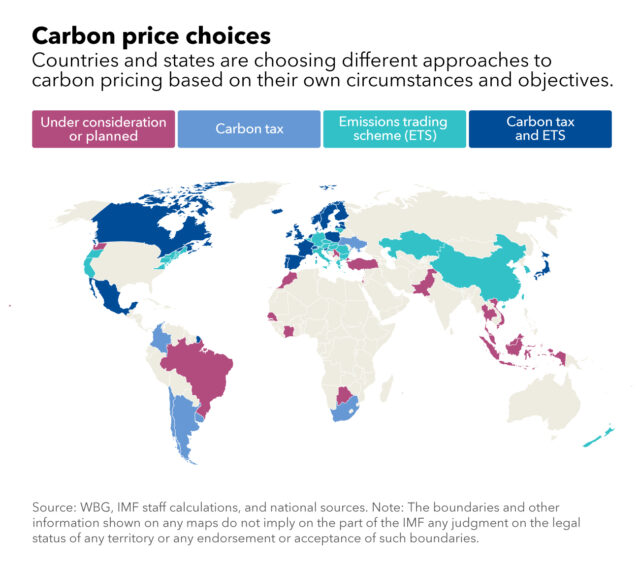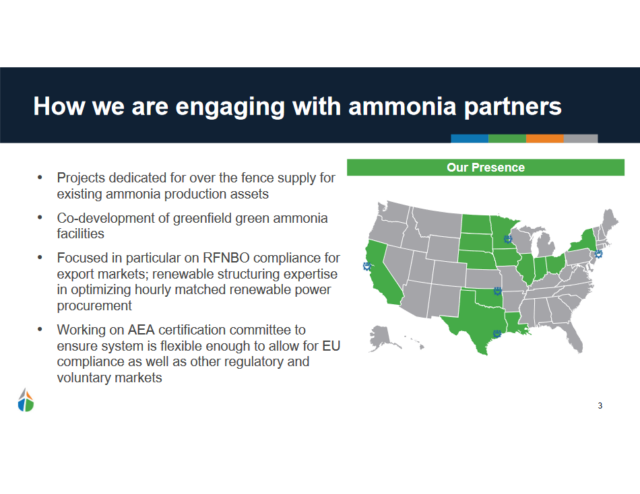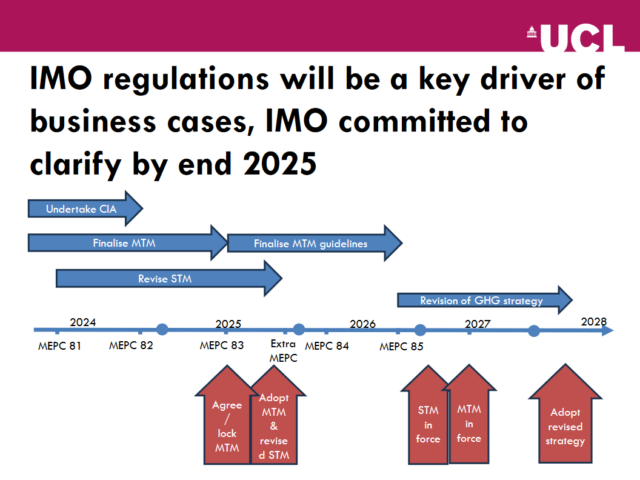Harmonised certification – opportunities and challenges across different markets
By Geofrey Njovu on November 26, 2023
The final day of the 2023 AEA annual conference opened with a panel exploring the challenges and opportunities for designing certification schemes for different markets. Moderated by Madhav Acharya, the discussion featured Emily Wolf from Ambient Fuels, Claire Behar from Hy Stor Energy, Domagoj Baresic from UCL Energy Institute and Patrick Hastwell from KBR.
The AEA’s ammonia certification system aims to enable ammonia producers, suppliers, and consumers to demonstrate product compliance with multiple different regulators and standards. The AEA’s system will also be a voluntary scheme, with potential to be recognized by mandatory programs like IMO or EU regulations. The panel was invited to discuss the various benefits of designing schemes for voluntary versus mandatory markets. In addition, they considered the benefits of designing schemes to meet specific, stringent market requirements (like the EU) versus a broad-based, umbrella-style approach.

Click to expand The extent of certification & standards under development in different jurisdictions. From Madhav Acharya, Certification for Mandatory and Voluntary Markets (Nov 2023).
Before exploring the different approaches to scheme design, the panel agreed that certification should be incorporated into projects at every stage, from engineering to actual delivery of the ammonia product. As a result of this, project developers have destination markets (and all the relevant certification requirements) in-scope from the early project stages. The panel also agreed that inter-jurisdictional certification is preferable, as it will lead to convergence on higher standards for emissions reduction.
The Green Hydrogen Standard: inter-jurisdictional certification

Click to expand. The Green Hydrogen Standard 2.0. Hy Stor Energy will produce hydrogen that meets these requirements at its Mississippi Clean Energy Hub. From Claire Behar, Global Market Reach (Nov 2023).
The Green Hydrogen Standard (of which version 2.0 was released at COP28) is a good example in this direction. That standard will define “green” hydrogen specifically as electrolytically produced hydrogen which releases a maximum of 1 kg of CO2-equivalent per kg produced, satisfying the EU and soon-to-be-released US guidelines. For “green” ammonia, the well-to-gate emissions intensity allowed will be 0.3 kg of CO2-equivalent per kg of ammonia produced. Although these requirements are relatively stringent, the panelists agreed that standards like these will encourage a “race to the top”. Hy Stor Energy will produce hydrogen at its Mississippi Clean Energy Hub that meets these requirements.
The market benefit of compliance with EU standards

Click to expand Ambient Fuels’ engagement with ammonia partners in the USA, focused on RFNBO compliance for export markets. From Emily Wolf, Compliance for export markets (Nov 2023).
Certification of ammonia to RFNBO standards presents a number of benefits. Compliance with these mandatory rules is the focus of most producers seeking to develop export projects, as this will allow the flexibility to demonstrate compliance with less-stringent, voluntary markets. This offers a number of benefits, among them broad export potential across the EU and like-minded jurisdictions, quicker market scale-up and investor confidence. It is also likely that the bulk of near-term demand for renewable ammonia will be driven by the EU – hence many project developers will feel the need to design their project to meet those market requirements.
The market benefit of broad-based certification schemes
But the benefit of a more comprehensive, umbrella-type certification scheme (such as the one currently under development by the AEA) is its inherent ability to serve multiple markets. Broad-based schemes will also promote the development of voluntary demand markets: an important way to facilitate the widespread adoption of ammonia as an energy commodity.
Progress at the IMO: a potential blueprint?

Click to enlarge. IMO’s revised strategic plan for decarbonisation. From Domagoj Baresic, 2023 IMO GHG Strategy and considerations for certification (Nov 2023).
The panel highlighted significant strategic progress from the International Maritime Organisation in its plan to decarbonise the shipping industry. The organisation aims to achieve net zero by 2050, with intermediate check-points in 2030 and 2040 with targets to reduce by 20-30% and 70-80% respectively. There are also plans to have market-based measures (GHG pricing and GHG fuel standards) in force in 2027, with carbon intensity as a key data input. The success of these regulations in a market like shipping fuel – with its truly global nature & wide array of stakeholders – could be a blueprint going forward for broad-based certification schemes.
Click to enlarge. IMO’s revised strategic plan for decarbonisation. From Domagoj Baresic, 2023 IMO GHG Strategy and considerations for certification (Nov 2023).
Implications for offtake
The panel acknowledged that negotiating long-term offtake is difficult, particularly when prices are destined to change due to evolving market conditions. In turn, the lack of offtake makes it harder for new projects to get off the ground. Because of this, project developers may choose to adopt certification approaches that best align with the requirements of offtakers. As many offtakers are typically focused on one particular end use for ammonia, this may in turn give rise to the development of standards on a use-by-use or sector-by-sector basis, making umbrella certification difficult to develop.
But despite these challenges, the panel agreed that the AEA’s commitment to developing an umbrella-style scheme is important, as it will enable producers to serve multiple markets & sectors. This flexibility is highly valuable for producers, and will make project financial close more straightforward.